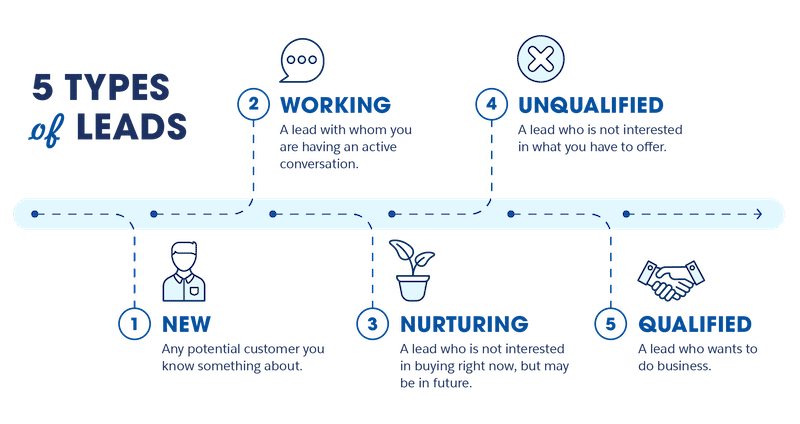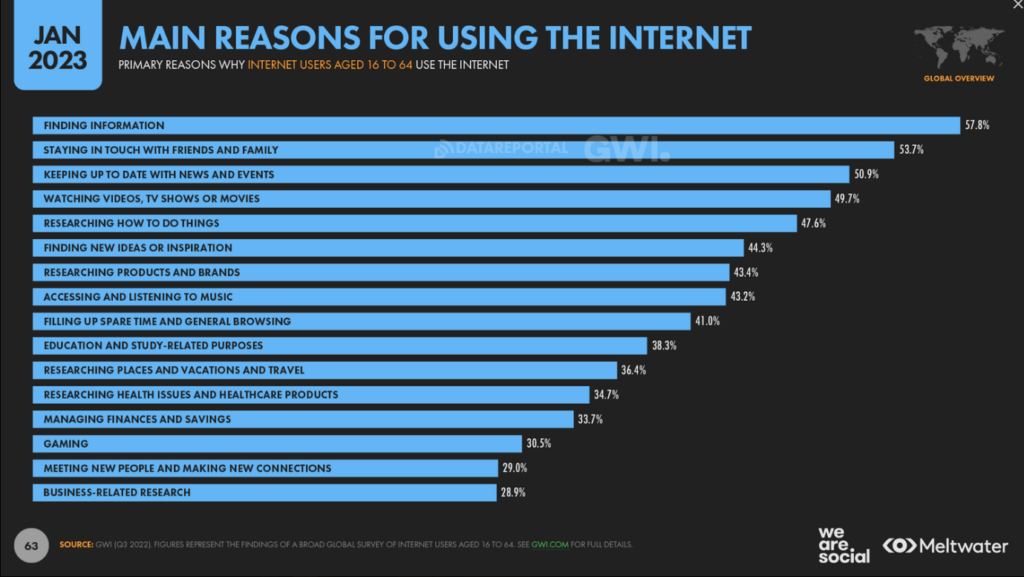In the dynamic lead generation arena, there’s wisdom in the saying, ‘What’s old can be gold,’ particularly when these time-honored strategies are infused with contemporary techniques and insights. In fact, generating more leads is the top priority for marketers over the next year.

The synergy between sales and marketing is more critical than ever. Both teams must collaborate closely, leveraging their unique strengths to revitalize proven strategies for today’s digital landscape.
That said, the blend of classic tactics and modern refinements continues to effectively generate leads and drive significant revenue growth. And I’ve seen it first-hand within companies with this synergy – there is less friction among teams and more collaboration to achieve milestones that are impactful to business objectives.
In this post, you’ll gain insights into:
- Hyper-Personalized Content Marketing: Learn how integrating AI and data analytics with content marketing can create highly targeted messages, improving lead quality and engagement.
- Strategic Networking and Relationship Building: Discover the power of transforming your sales team into industry thought leaders and how marketing can amplify this impact through digital platforms.
- Advanced Email Marketing Techniques: Understand the role of predictive analytics in optimizing email campaigns and how integrating CRM data can make every customer interaction more meaningful and effective.
Embracing Hyper-Personalization in Content Marketing
Did you know that 85% of B2B marketers use content to generate leads? Standing out in today’s digital content landscape demands more than generic messaging. Hyper-personalization, powered by AI and data analytics, is critical. This approach enables crafting content that precisely meets the needs and preferences of specific audience segments, cutting through the information overload to engage audiences more meaningfully.
Why Hyper-Personalization is Effective:
- Deep Audience Understanding: AI algorithms can process vast amounts of data to uncover detailed insights about audience behaviors and preferences. This deep understanding allows marketers to craft content that resonates on a personal level.
- Leveraging Sales Insights: Sales teams often gather first-hand insights into the challenges faced by customers. By incorporating these insights into content strategy, marketing can address specific pain points, making the content highly relevant and helpful to the audience.
The Impact of Hyper-Personalized Content:
- Improved Lead Quality: When content speaks directly to an audience’s specific needs and challenges, it becomes more engaging and valuable. This improves lead quality, as the audience interacting with the content is likelier to genuinely be interested in your products or services.
- Increased Engagement: Personalized content is more likely to capture attention, keep the audience engaged, and encourage interactions. This heightened engagement is a crucial step towards building lasting customer relationships.
Implementing Hyper-Personalization:
- Start with Data: Analyze customer data to identify distinct audience segments. Look at patterns in customer interactions, preferences, and feedback.
- Collaborate with Sales: Use insights from your sales team to understand customer challenges. What questions are customers asking? What obstacles do they face? Use this information to guide your content creation.
- Iterate and Refine: Monitor how your audience responds to different types of content. Use this feedback to continuously refine your approach, ensuring your content remains relevant and impactful.
Hyper-personalization in content marketing is about creating meaningful connections by providing value tailored to your audience’s specific needs. By delivering personalized, relevant content, businesses can significantly improve their engagement and lead quality and convert leads into customers.
Strategic Networking and Relationship Building: Beyond Selling
The role of the sales team has expanded beyond traditional selling to encompass relationship building and establishing thought leadership. This evolution reflects a shift in focus from short-term transactions to long-term, value-driven customer relationships. Sales professionals are now expected to act as advisors and industry experts, cultivating client trust and credibility.
On the other hand, marketing teams play a vital role in this new sales paradigm. Their responsibility is to provide platforms that highlight the sales team’s expertise. This involves creating and managing webinars, podcasts, and other content-driven events. These platforms enable sales professionals to share valuable insights and solutions, demonstrating their industry knowledge and enhancing their reputation as thought leaders.
Strategic networking and relationship building are more than just sales techniques; they are crucial for sustainable business growth. Emphasizing these aspects leads to several significant advantages, such as:
- Enhanced Lead Quality: Building genuine relationships helps attract higher-quality leads. Clients who trust your expertise are more likely to engage with your business.
- Improved Customer Retention: By establishing solid relationships, sales teams can significantly improve customer retention rates. Satisfied customers are more likely to return and refer others.
- Increased Referral Opportunities: Networking and relationship building often lead to increased referrals. Satisfied clients are valuable sources for new business through word-of-mouth.
Implementing a strategic approach to networking and relationship building requires a shift in mindset from both sales and marketing teams. Encouraging active participation in industry events, supporting sales teams with the right tools and platforms for thought leadership, and focusing on building long-term client relationships are critical steps in this direction. By doing so, businesses can create a strong foundation for continued growth.
Advanced Email Marketing Techniques: Predictive Analytics at Play
Email marketing is evolving, and the key to its success now lies in using predictive analytics. This technology enables marketers to analyze vast amounts of data to determine the most effective ways to engage with their audience. By understanding patterns in user behavior, email marketing can become a highly targeted tool, boosting engagement and conversion rates.
Predictive analytics in email marketing allows for a more personalized approach. This means that emails can be tailored not just based on basic demographic information but also on user behavior, preferences, and previous interactions with your brand.
This level of personalization is critical in a landscape where consumers are bombarded with generic marketing messages.
- Optimize Send Times: Use predictive analytics to determine the optimal times to send emails to different audience segments, increasing open and engagement rates. (Psst: The best time to send a marketing email is 9:00 AM – 12 PM EST, then 12:01 PM – 3 PM EST. The worst is 1 AM – 3 AM EST).
- Segmentation Based on Behavior: Create segments in your email list based on user behaviors, such as past purchases or interactions with your website, to send more targeted content.
- Personalize Content: Utilize data insights to personalize the content of your emails, making them more relevant and engaging to each recipient.
Integrated SEO and SEM Approaches: Understanding Intent
Modern SEO and SEM are no longer just about incorporating keywords into your content. They are about understanding and aligning with the intent behind those keywords. This means creating content that answers the questions and solves the problems that potential customers are searching for.

Integrating SEO and SEM strategies ensures that your content reaches the right audience at the right time. By understanding user intent, you can create content that guides potential customers through the buyer’s journey, from awareness to decision-making.
This approach improves your search rankings and enhances the user experience.
- Align Content with User Intent: Develop content that addresses the needs and questions of your audience at each stage of the buyer’s journey.
- Use SEO Data to Inform Sales Strategies: Sales teams can use SEO data to understand customer needs and tailor their approach accordingly.
- Continuous Keyword Analysis: Regularly analyze and update your keyword strategy to align with changing user search behaviors and trends.
Social Selling with Precision: The Power of Listening
Social selling has become an indispensable tool in the digital sales arsenal. Of organizations engaged in social selling, 61% report revenue growth and sales professionals who use social selling close 40-50% more new business than those who don’t.
Sales teams can build relationships and foster trust by actively listening and engaging with potential leads on social platforms. This approach requires shifting from traditional selling tactics to a more nuanced, engagement-focused strategy.
The power of social selling lies in its ability to tap into the conversations already happening around your industry or product. By engaging with these conversations meaningfully, sales teams can position themselves as helpful and knowledgeable, creating lead generation and conversion opportunities.
- Implement Social Listening Tools: Use social listening tools (e.g, HubSpot, Buffer, Taplio, Sprout Social, etc.) to monitor conversations and identify potential leads discussing relevant topics or expressing needs that align with your product or service.
- Engage Authentically: Engage with potential leads genuinely and helpfully, providing value in each interaction.
- Integrate with Broader Marketing Strategy: Ensure that social selling efforts are aligned with the broader marketing strategy for cohesive brand messaging and audience engagement.
Wrapping It Up
The essence of successful lead generation in lies in the seamless integration of sales and marketing. By aligning and updating traditional tactics with modern tools and insights, these teams don’t just generate leads; they create lasting customer relationships.
The key is to understand that while the principles of lead generation remain constant, the tactics must evolve to stay relevant in the digital era.
Businesses that can skillfully blend time-tested strategies with innovative approaches will find themselves turning leads into loyal customers and driving significant revenue growth.
Want to work with me?
Let’s start a conversation if you’re ready to take your lead generation strategies to the next level with these proven tactics. Reach out directly at suttida@fastmarkit.com. Let’s collaborate to elevate your marketing game.





